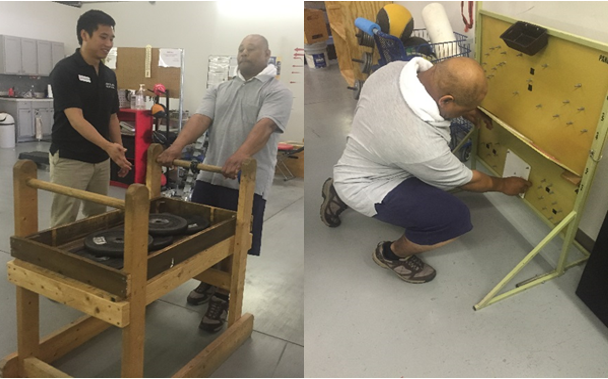

In the past, we have shared many articles that have explained the Five W’s of work conditioning: Who, What, When, Where, and Why.
- Who: Ideal candidates have shown improvement since their injuries but have not met the physical demands of their regular jobs. Injured workers may also be referred to work conditioning if they are not responding well to other rehabilitation methods.
- What: Work conditioning is essentially the transition period between outpatient physical therapy and the actual job. An injured worker may have regained the ability to walk but it does not mean that he or she can walk while handling an 80-lb piece of plywood or have the balance to walk safely through the uneven terrain of the job site.
- When: A candidate for work conditioning should be referred as soon as they are medically stable and ready to be in the workplace! This includes injured workers who have completed their acute physical therapy treatment, have been out of work for an extended period of time, have not had success with other rehab options or lack confidence in their ability to safely perform their job duties.
- Where: This is an easy one: Job Ready Services. We utilize the same job-specific equipment and protocols that we use in our employment testing in the work conditioning programs. Job Ready Services has an advantage in choosing job-specific exercises from an extended database and incorporate job-specific equipment that is used on actual job sites.
- Why: A unique program is structured for each worker to increase strength and flexibility that are specific to their jobs. We also provide individualized attention throughout the program to ensure that everyone has the best chance to make progress. In some cases, we can also utilize the XRTS lever arm to determine whether effort to improve is being provided and to document non-compliant behaviors if present.
With all of these questions answered, I’m sure you’re asking yourself the most important question: Will work conditioning actually work?
We recently sorted and analyzed the data from every work conditioning referral that we have seen in 2015 and found that 43% of them are able to return to work at their regular job. It’s also important to note that the percentage of injured workers that were able to return to work (RTW) is greater than any of the other outcomes, including those that were discharged due to lack of effort (11%).
 |
Looking at the data, we can also see that a combined 26% of the injured workers were either rated and released at MMI or cancelled by the physician. This shows that while the injured workers may not be able to return to their regular jobs, a significant portion were able to return to modified duty or to another job.
The data is evidence that our work conditioning program really does help each injured worker get back to their pre-injury state. Every program is individualized for each worker, area of injury, and job description. One injured worker suffered a right foot injury when he fell from the roof of a construction project. He began the program with minimal strength and balance in his right lower extremity. As he progressed in the program, we were able to simulate walking across roof trusses at his job site while carrying tools and equipment.
Another client worked as a para-transit operator and suffered a low back injury when his rider resisted as he was attempting to lock the brakes on their wheelchair. At Job Ready Services, he was able to regain his strength and return to work after two weeks in the program. We were able to simulate the force that is required to push and pull a wheelchair user and simulate strapping a wheelchair onto his bus with sustained kneeling using panels 3 and 4 of the Valpar tool as noted in the picture below.
 |
The distribution of data also shows a major disparity in the number of days between the date of injury and referral date which correlates directly to the probability of return to regular work. The average time between injury and referral was 157 days for those who returned to regular work and 376 days for those who did not. The number of days for the non-RTW injured workers was over a year and more than double of the RTW injured workers – that is a staggering difference between the two numbers no matter how you look at it.
Will work conditioning actually work? The most likely outcome for injured workers is also the most favorable: return to work. They also have the best chance to return to work when starting work conditioning sooner than later. The answer is obvious: Refer your injured workers to our work conditioning program as soon as possible and they will have the best chance to be job ready!
-Submitted by Vincent Nieh, Work Conditioning Coordinator

